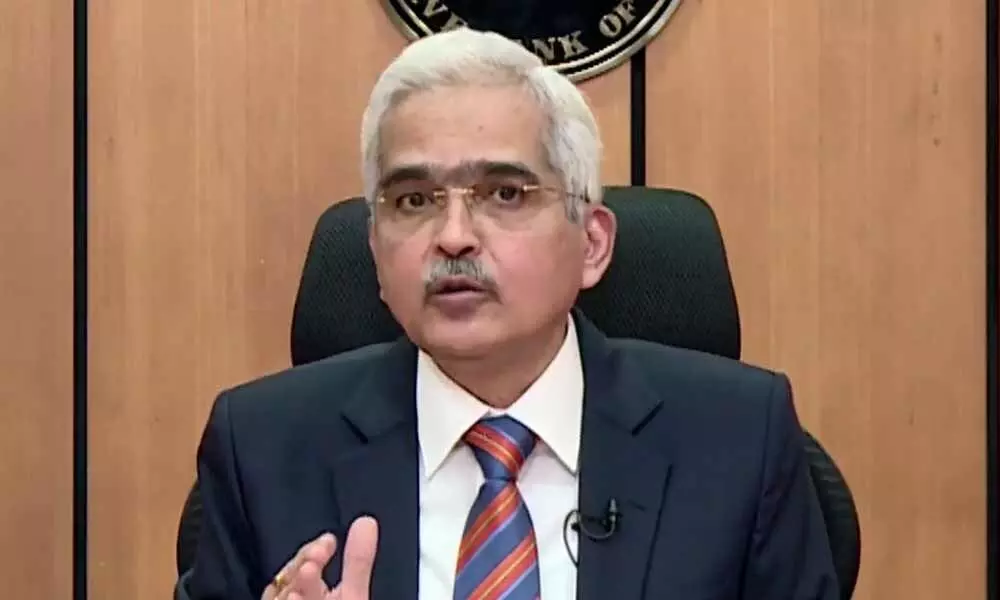Rescue acts, growth measures dominate RBI's platter in 2020
Within three weeks of launching the rescue act, the RBI's rate setting panel's meeting got advanced to deliver a deep cut of 0.70 per cent in key rates, a reduction in cash reserve ratio by 1 percentage point, and an announcement of a three-month repayment moratorium on loan repayments and an assured liquidity support through the TLTROs
image for illustrative purpose

Mumbai: Delivering public speech hours after the RBI launched a rescue act for Yes Bank on March 6, Governor Shaktikanta Das reiterated the RBI's affirmation to do whatever was needed to combat the coronavirus impact. On that day, India had only one confirmed Covid-19 infection, the World Health Organisation was five days off from declaring it as a pandemic and the financially debilitating lockdowns were not even on the horizon.
Das' promise on efforts to mitigate Covid-19 impact appeared as a footnote in news reports from the event. Within three weeks of launching the rescue act, the RBI's rate setting panel's meeting got advanced to deliver a deep cut of 0.70 per cent in key rates, a reduction in cash reserve ratio by 1 percentage point, and an announcement of a three-month repayment moratorium on loan repayments and an assured liquidity support through the Targeted Long Term Repo Operations (TLTROs).
A countrywide lockdown was initiated and the economy, which had already suffered over ten quarters of decline in growth, was in a tailspin. Governments across the world were announcing relief packages but fiscal constraints put doubts over what India could do. Finally, the government settled for relief costing just over 2 per cent of GDP, the lowest among the peers affected by the pandemic, and a bulk of the heavy-lifting had to be done by the RBI.
It extended the loan moratorium by another three months, delivered another 0.45 per cent in rate cut by advancing one more meeting of the panel and ensured that liquidity in the system was at a comfortable level. However, mobility restrictions had an impact on inflation, and the Consumer Price Inflation (CPI) index soared, breaching the 6 per cent target set for the central bank by the government.
But for the technical aspect of the data collectors not being able to visit the mandis to assess the prices during the lockdown, the RBI would be forced to explain why the inflation overshot the upper end of the target for over six continuous months. The price rise and expectations of inflation being sticky ensured three consecutive status quo decisions in as many reviews towards end 2020 but there were a slew of unconventional measures like the TLTROs being adopted by the RBI to ensure growth - it estimates the economy to contract by 7.5 per cent in FY21 - comes back.
Das was left to continue affirming the RBI's intent to do all for growth as and when the space gets created. In the customary post-policy addresses, the focus was to instil optimism and famous personalities' quotes were invoked. The six-member Monetary Policy Committee (MPC) inducted three new external members in October - after a delay in the scheduled meeting as the government took time to announce the names of new members - and the panel will be given a new inflation target to pursue in March.
Given the RBI's predicaments during the pandemic, there are voices demanding an upward revision of the 4 per cent CPI mid-point so that the central bank can do more rate cuts in the future, making it one of the most anticipated events in the new year.
Regardless of the target, analysts are not expecting more rate cuts from the RBI in 2021 because of the high inflation in the economy, which has led many to already wonder if we are passing through a 'stagflation', which is marked by high unemployment, low growth and high inflation. Even as the ability to deliver rate cuts has been curtailed, Das said the RBI has been able to reduce the borrowing costs for the government - which had to expand its borrowings due to the pandemic - to under 6 per cent, which is the lowest in 16 years.
The assertion from Das came weeks after his predecessor Urjit Patel and former Deputy Governor Viral Acharya complained of excessive fiscal dominance in central bank actions in separate books reflecting upon their representative stints at Mint Road released on the same day in July. In his book, Acharya said RBI lost its Governor at the "altar of financial stability". Das, who emphasises on consensus, managed to ensure that the relations between the Finance Ministry and the RBI - which had been sour on various issues in the past - did not turn frosty. The government also included the benefits of the RBI's measures while calculating the overall stimulus package done by India.
The government supported the RBI by making long-pending amendments in laws to give the central bank complete control in regulating co-operative banks, ensuring that the housing finance companies are regulated by the central bank. The RBI had to mount two bank rescues in 2020 - Yes Bank and Lakshmi Vilas Bank - using disparate means in each instance to reach the same end of a fast and successful resolution. While largest lender SBI was roped in to help Yes Bank by infusing Rs 10,000 crore, majority control in the nearly century-old LVB was given to Singaporean lender DBS' local unit.
Bond holders' were an aggrieved lot as they lost money due to write-offs in both the instances and have filed suits in the court against the measures. The apex bank, however, did not achieve the same success on the co-operative banks front, and a solution to the PMC Bank crisis eluded all through the year.
Ashish Agashe

